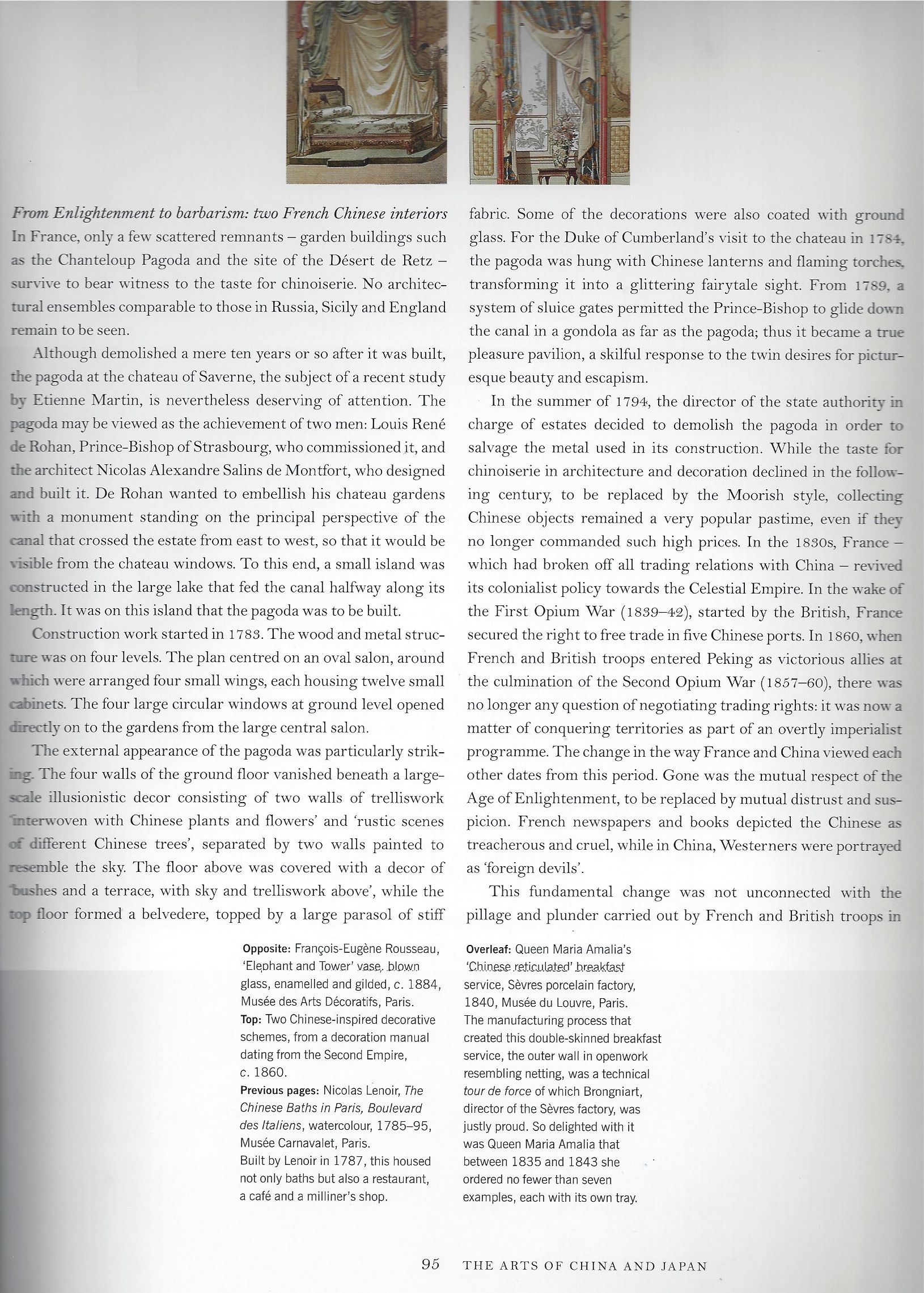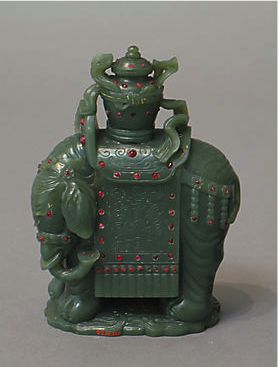A Mold-Blown Glass Vase
By Ernest Léveillé, circa 1888
In the Chinese style, modelled as an elephant, with engraved signature E. Leveille
11 in (27.9 cm) high
cf. Emmanuelle Gaillard, A Taste for the Exotic: Orientalist Interiors, 2011, p.94
L'Art Verrier a l'aube du Xxe Siècle, exh. cat., Galerie des Arts Decoratifs SA, Lausanne, 1973, no.144
11 in (27.9 cm) high
cf. Emmanuelle Gaillard, A Taste for the Exotic: Orientalist Interiors, 2011, p.94
L'Art Verrier a l'aube du Xxe Siècle, exh. cat., Galerie des Arts Decoratifs SA, Lausanne, 1973, no.144
François-Eugène Rousseau (1827-1891) was one of the first European artists to incorporate Japanese imagery into his designs and also one of the most inventive and experimental glass-makers of the 19th century. His work developed against a background of resurgent interest not only in Japanese art and culture, but also in a broader sweep of oriental art from Japan and China, India and the Middle East. Oriental-style interiors from this period often included aspects of all of these different cultures and their arts, and artists like Rousseau responded to demand by producing pieces which echoed these distant cultures.
Ernest-Baptiste Léveillé was one of Rousseau's pupils and joined his firm as a decorator in 1877. In 1885 Rousseau sold his workshop and retail store to Léveillé who continued to produce Rousseau's original designs for several years, exhibiting these at the 1889 and 1910 Paris Exhibitions. He also produced new designs using Rousseau's techniques of crackled glass with metallic oxides and gold-leaf inclusions, flushed and overlay glass, cameo and intaglio-cut vases of Oriental inspiration, and free-form vessels. Léveillé was awarded a Gold Medal at the 1889 Paris Exhibition, a medal at the 1893 Chicago World's Fair and another Gold Medal at the 1900 Paris Universal Exhibition.
An elephant bearing a vase was a popular subject in the decorative arts of the Qing Dynasty (1644-1911) in China. The words 'vase' and 'elephant' are respectively symbolic of 'peace' and 'signs', thus this piece echoes the Chinese proverb, 'When there is peace, there are signs'.
Ernest-Baptiste Léveillé was one of Rousseau's pupils and joined his firm as a decorator in 1877. In 1885 Rousseau sold his workshop and retail store to Léveillé who continued to produce Rousseau's original designs for several years, exhibiting these at the 1889 and 1910 Paris Exhibitions. He also produced new designs using Rousseau's techniques of crackled glass with metallic oxides and gold-leaf inclusions, flushed and overlay glass, cameo and intaglio-cut vases of Oriental inspiration, and free-form vessels. Léveillé was awarded a Gold Medal at the 1889 Paris Exhibition, a medal at the 1893 Chicago World's Fair and another Gold Medal at the 1900 Paris Universal Exhibition.
An elephant bearing a vase was a popular subject in the decorative arts of the Qing Dynasty (1644-1911) in China. The words 'vase' and 'elephant' are respectively symbolic of 'peace' and 'signs', thus this piece echoes the Chinese proverb, 'When there is peace, there are signs'.

















